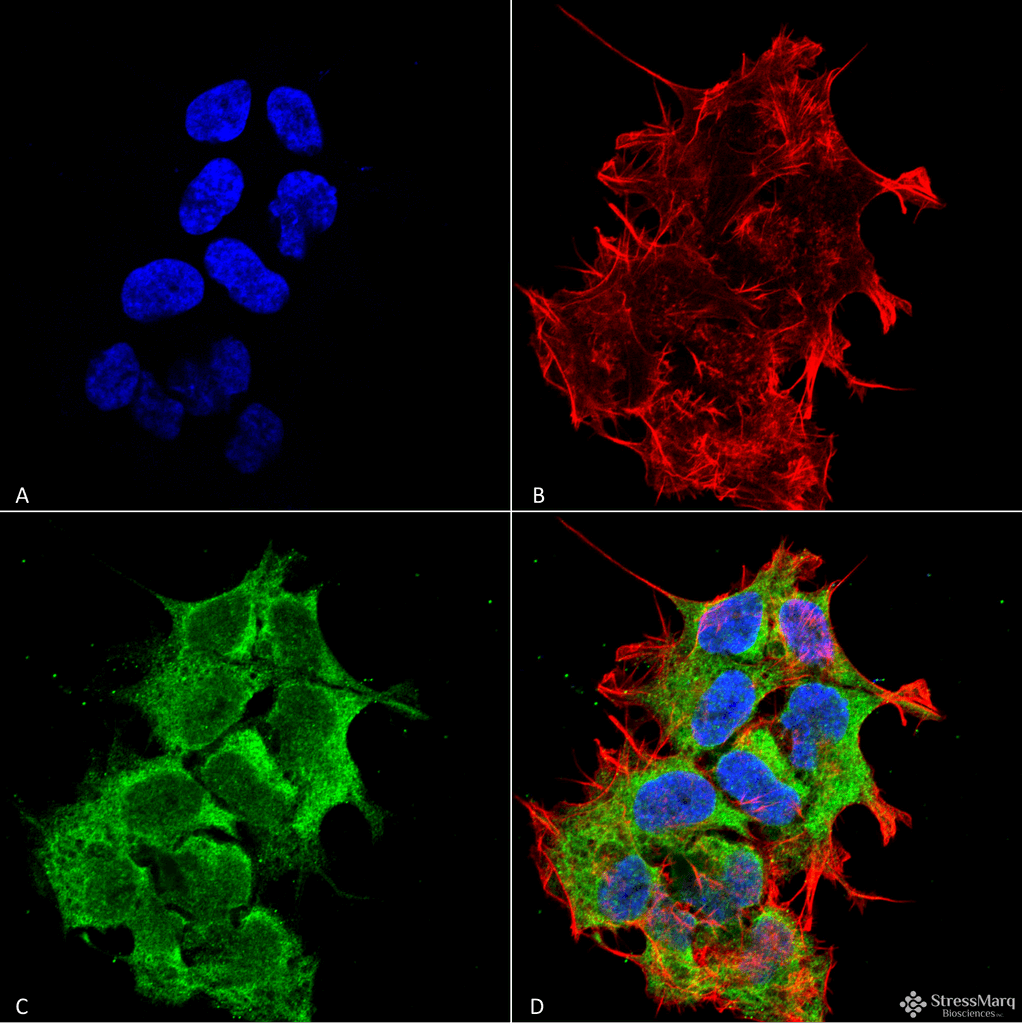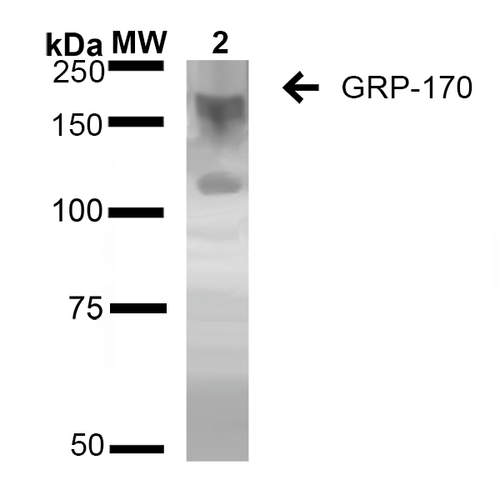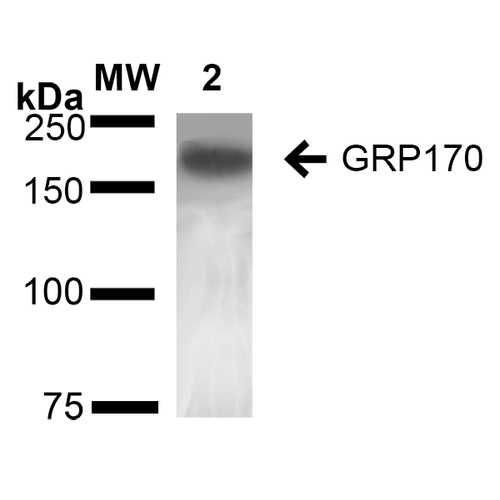GRP170 Antibody
GRP170 Antibody, Clone 6E3-2C3
- SPECIFICATION
- CITATIONS
- PROTOCOLS
- BACKGROUND

Application
| WB, ICC |
|---|---|
| Primary Accession | Q9Y4L1 |
| Other Accession | NP_006389.3 |
| Host | Mouse |
| Isotype | IgG2b |
| Reactivity | Human, Mouse, Rat |
| Clonality | Monoclonal |
| Description | Mouse Anti-Human GRP170 Monoclonal IgG2bK |
| Target/Specificity | Detects ~170kDa. |
| Other Names | ORP150 Antibody, HSP12A Antibody, Hypoxia up regulated 1 Antibody, Orp150 Antibody, Glucose regulated Antibody 170 Antibody, 150kDa oxygen regulated Antibody Antibody |
| Clone Names | 6E3-2C3 |
| Immunogen | Raised against a synthetic peptide of human GRP170 |
| Purification | Protein G Purified |
| Storage | -20ºC |
| Storage Buffer | PBS pH7.4, 50% glycerol, 0.1% sodium azide |
| Shipping Temperature | Blue Ice or 4ºC |
| Certificate of Analysis | 1 µg/ml of SMC-232 was sufficient for detection of GRP170 in 20 µg of HEK293 lysate by colorimetric immunoblot analysis using Goat anti-mouse IgG:HRP as the secondary antibody. |
| Cellular Localization | Endoplasmic Reticulum | Endoplasmic Reticulum Lumen |

Thousands of laboratories across the world have published research that depended on the performance of antibodies from Abcepta to advance their research. Check out links to articles that cite our products in major peer-reviewed journals, organized by research category.
info@abcepta.com, and receive a free "I Love Antibodies" mug.
Provided below are standard protocols that you may find useful for product applications.
Background
GRP170, also known as ORP150, is the largest member of glucose-regulated Antibodys, and acts as a human chaperone Antibody. It is thought to play an important role in Antibody folding and secretion in the ER. Suppression of the Antibody is associated with accelerated apoptosis, therefore having an important cryoprotective role in hypoxia-induced cellular pertubation. This cryopotective role has led to an anti-tumor immune response, which will hopefully lead to therapeutic immunizations against cancers (1). GRP170 has also been shown to bind with dendritic cells and provide the danger signals to induce anti-tumor immune responses (2).
References
1. Wang H., et al. (2014) Front Oncol. 4: 377.
2. Manjili M.H., et al. (2006) Immun. Cell Biol. 84: 203-208.
If you have used an Abcepta product and would like to share how it has performed, please click on the "Submit Review" button and provide the requested information. Our staff will examine and post your review and contact you if needed.
If you have any additional inquiries please email technical services at tech@abcepta.com.













 Foundational characteristics of cancer include proliferation, angiogenesis, migration, evasion of apoptosis, and cellular immortality. Find key markers for these cellular processes and antibodies to detect them.
Foundational characteristics of cancer include proliferation, angiogenesis, migration, evasion of apoptosis, and cellular immortality. Find key markers for these cellular processes and antibodies to detect them. The SUMOplot™ Analysis Program predicts and scores sumoylation sites in your protein. SUMOylation is a post-translational modification involved in various cellular processes, such as nuclear-cytosolic transport, transcriptional regulation, apoptosis, protein stability, response to stress, and progression through the cell cycle.
The SUMOplot™ Analysis Program predicts and scores sumoylation sites in your protein. SUMOylation is a post-translational modification involved in various cellular processes, such as nuclear-cytosolic transport, transcriptional regulation, apoptosis, protein stability, response to stress, and progression through the cell cycle. The Autophagy Receptor Motif Plotter predicts and scores autophagy receptor binding sites in your protein. Identifying proteins connected to this pathway is critical to understanding the role of autophagy in physiological as well as pathological processes such as development, differentiation, neurodegenerative diseases, stress, infection, and cancer.
The Autophagy Receptor Motif Plotter predicts and scores autophagy receptor binding sites in your protein. Identifying proteins connected to this pathway is critical to understanding the role of autophagy in physiological as well as pathological processes such as development, differentiation, neurodegenerative diseases, stress, infection, and cancer.




